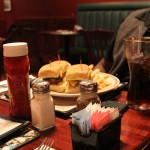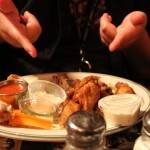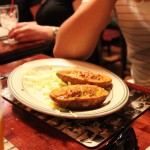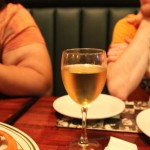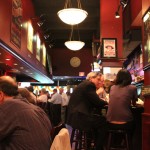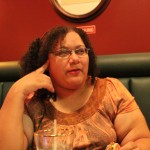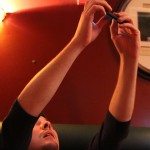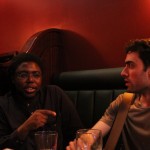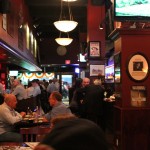One of the main criticisms of the Canon 7D was that its high ISO abilities are not as great as the 5D Mk II. While this is true, that doesn’t mean that the files produced are not usable in the slightest. I took the 7D to a get-together amongst New York game journalists as well as another event to test the high ISO abilities as well as the autofocus abilities. Check them out after the jump.
Gear used: Canon 7D with Canon 24-105mm F4 L IS.
All photos were shot in manual mode at ISO 3200 and 6400. For the most part, most images were shot at 1/8th of a second as metering was done for the most balanced exposure. ISO 6400 is the highest setting for the 7D without expansion. Please note that all photos were shot in the smallest JPEG mode and that white balance was set in auto. The only post processing conducted was resizing in Lightroom. All compositions were intentional and this was shot using the photojournalist approach of documenting events as they happen. Since this wasn’t a paid gig, and it was mostly to test out the abilities of the 7D, it was quick and dirty.
And now to the review.
Autofocus
Once again, as we saw in Day 1, the autofocus abilities for shooting in low light events worked very well in terms of accuracy. This was nowhere close to the bedlam that happened on Day 2. Additionally, the focusing was speedy. The autofocus was set to full automatic for the test. Subjects were all around 3 feet to 10 feet away from me when they were being photographed. This is the typical range that one photographs their subjects at when shooting events. One can get a very satisfying feeling to know that they can rely on Canon’s autofocus system to work better for them while working at an event like this. My 5D Mk II would’ve spent quite a bit of time hunting for the correct spot to focus on unless it was switched into spot-focusing mode. This alone is reason enough for 5D Mk II owners to consider the 7D was a strong backup or second camera body.
High ISO
As for the high ISO images, you can take a look through the gallery for yourself. The high ISO abilities of this camera produce very usable results.There is quite a bit of color noise in the red areas and the dark areas of the photos. One can also see quite a bit of noise in the out of focus areas. The noise on the new Canon cameras does not look as good as they do on the Nikon’s. Though this may annoy some Canon fanboys reading this, Nikon’s noise looks much more filmlike although that prize ultimately goes to the Sony A850 in my opinion. However, the noise can be easily removed in Photoshop or Lightroom. If you’re shooting a wedding, you always have the option of converting to black and white followed by adjusting the contrast and brightness. Brides dig that stuff. Additional post-processing may also be done to add in light gradients for fill-ins afterward.
Color Rendition
Color rendition on the 7D seem to be better than with the Nikon D300s. Once again, this was all done with auto white balance set; so was everything in my D300s reviews. To be honest, all files that come from these cameras in similar lighting conditions will require color processing. I haven’t seen any cameras that can auto process accurately in this type of lighting. This is evident in the opening photo. My friend, Jess, isn’t exactly that shade of red. Perhaps after the ISO wars are over, the dynamic range wars will begin and consumers will need to learn color temperatures in terms of Kelvin units.
In Use with the 24-105mm F4 L IS
If the 24-70mm F2.8 L has been attached to this camera, then sharper images could have been taken and also at a faster shutter speed. Because of this, one can notice some motion blur on part of the subjects being photographed. The 24-105mm F4 L IS provides some of the best image stabilization for the package. It’s the lens I often take to any paid gig as the versatility is invaluable. On a cropped body, the images are very sharp as this lens tends to get softer towards the corners.
Please feel free to leave any comments or criticisms down below in the comments.



